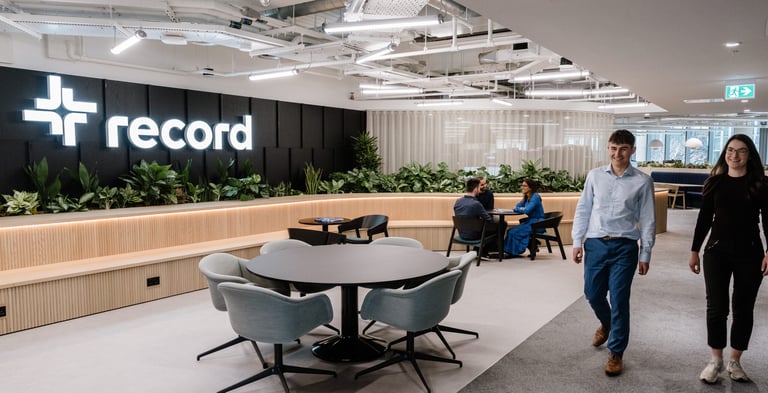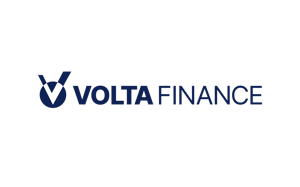Record plc (LON:REC) Chief Executive Officer Dr Jan Hendrik Witte caught up with DirectorsTalk to discuss H1 FY26 financial results, including its £110.3bn in Assets under Management, a shift into new asset classes, and the rationale behind strategic changes in pursuit of long-term growth.
Q1: For the benefit of those who are new to Record Plc, could you explain what the company does?
A1: Record is a specialist asset manager and, in a sentence, what we do is we focus on best-in-class solutions for large institutional investors. What we mean by that is, when we say best-in-class, is that we’re able to address exactly the requirements of large investors in a variety of fields, but by our size.
In terms of assets under management, we just exceeded $110 billion in AUM across clients globally and we trade just over $1 trillion in volume every year. So, we’re very used to catering to large clients in large mandates with the average client size north of $1 billion.
What clients come to us for is solutions and structures which they cannot easily find elsewhere and where we are of a size, where we are large enough to deliver these best-in-class solutions or these somewhat customised mandates to them at these sizes. But we’re still small enough, nimble enough to listen and adjust to exactly what it is our clients need.
Q2: You talked in your results announcement about Record as a company in transition. What was the rationale behind that? What are the new business lines that you’re moving into?
A2: The business goes back to the early 80s and was founded as an FX business. So still today, a lot of the volumes I just mentioned, a lot of the trading we do is in FX derivatives.
We do a lot of FX hedging for large pension funds, for example, where as a pension fund, you tend to have your obligations to pensioners in your home currency, which is where you’re based. If you’re invested internationally, if you have a large international portfolio, that creates a degree of currency risk. If there’s a mismatch between the investments in foreign currency and your obligations in your home currency. So, originally, if we go back to the start of the business, we’ve always helped clients to look after that kind of risk in the most cost-efficient and most robust way. That is how the business started and it’s still a lot of what we do today.
However, in recent years, to touch on your question, what does it mean we’re a business in transition? We have started to use what is a phenomenal operational engine in the background of all of this.
To put this into context in terms of the AUM numbers and the trading volumes, we have an exceptional operational capability in catering to large investors. In recent years, we have more and more deliberately used that engine combined with our flexibility to tweak it and adjust it to exactly what our clients’ requirements are, to also offer products in other asset classes. So, we’ve moved into EM local debt, for example, a number of years ago, we’ve launched a large infrastructure equity fund, and we’ve also done a lot of work in the credit space.
So, while to the outside observer, these might look like very different or distinct areas, what they have in common is that in all cases, we’ve set up a fund, we’ve set up a vehicle, we’ve created a portfolio which was tailored exactly to the needs of a large investor in the way that most other people would have struggled to do.
In turn, that allows us to move into new fields at relatively large sizes. If we take the infrastructure equity fund, for example, while infrastructure is a new domain for us, we moved into that space with €1.1 billion of commitments on day one.
That’s really the direction where we’re becoming more and more active and where we say, we’re now transitioning the product range to offer these new products more routinely.
Q3: Profits were down in the first six months of this financial year, what was behind that?
A3: In addition to the risk management activities that we do, we do offer a number of alpha strategies, particularly in the FX space and towards the end of last year, we had a number of those mandates terminate, which weighed on profits this year which we announced as of last year but it really showed in the numbers only this year. So, they have come down slightly, which is in line with how we present the business.
If we categorise the products of the business today, then we say there’s, on the one hand, risk management products, which allow us relatively stable and predictable returns from a shareholder perspective.
There is the private market space, which holds almost everything else that’s not risk management—things like EM debt, infrastructure equity, credit, private equity—that’s all in what we call the private market pillar.
Lastly, we’ve got an absolute return pillar and the products in absolute return tend to be slightly more volatile as a return driver for us, because it’s more frequent that investors change their mind about where they want to be invested or where they see return opportunities.
So, we saw some outflows in FX Alpha towards the end of last year, which explains the reduction in profits there but this year, we’ve again seen inflows. It’s just part of running the business and part of what we expect in the particular product category.
Q4: With the changes you’re making that you were talking about earlier, what will Record Plc look like in five years’ time?
A4: When we started to set out on the strategy which we’re now delivering, which is a number of years ago, we said ‘what will we need to do’, ‘what would the business need to look like for us to have a $1 billion market capitalisation?’ So, we really worked back from that in saying how can we use what’s unique about what we can do today, to use it in the best possible way to achieve that kind of market capitalisation. That’s how we set the strategy which we’re now pursuing.
We’ve now been on this path for a number of years in that, for the first couple of years, it was a case of ‘how do we do this?’, it was a case of deciding what would be necessary. We’re now firmly in transition so we now see the new product areas which we’ve added to the business, which now complement the traditional parts of the business, we now see those contribute. We’re now in a position where we say the strategy, the way we set it out, is working.
So, five years from now, we would expect to really see the benefits and see that plan the way we set it out come through. I’m not going to put a number on that, but we would expect the business to be much, much larger than it is today, with a much larger market capitalisation. Based on what we see today in how the different parts of the strategy contribute, that appears to be working.








































